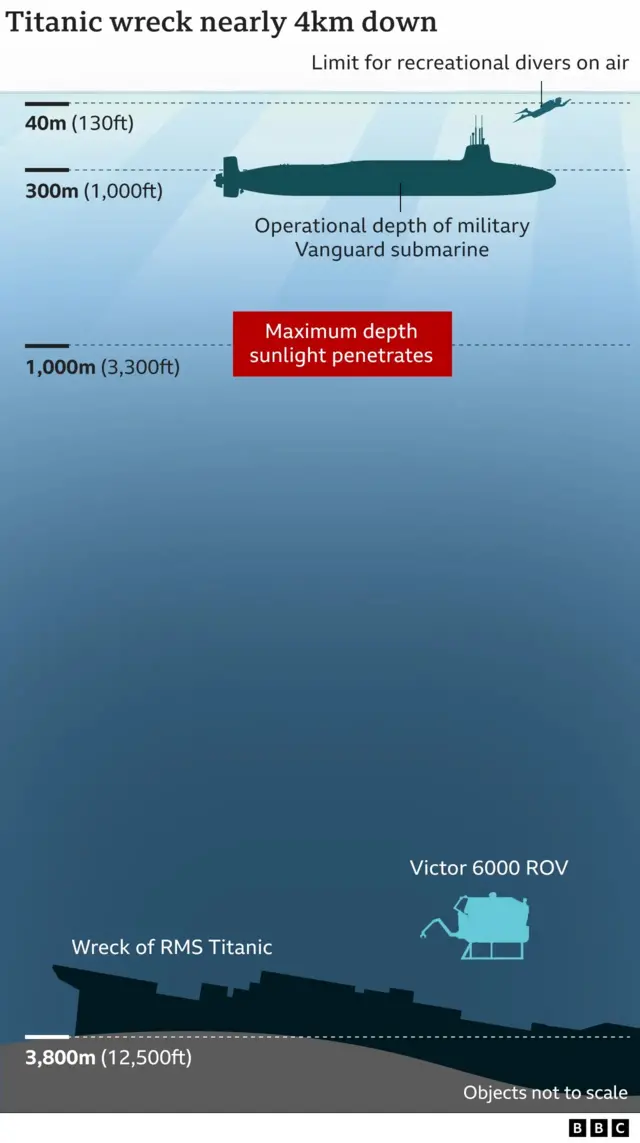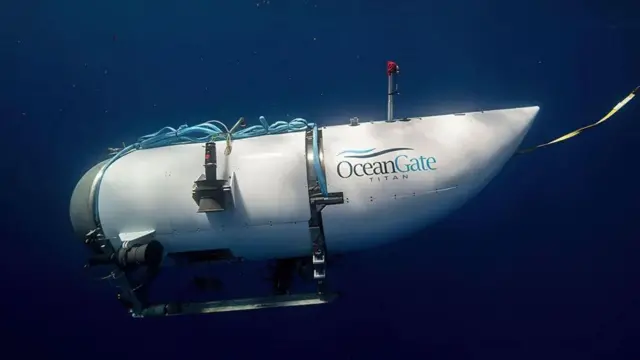Inquiry shown wreckage revealing how Titan's hull came apartpublished at 22:32 BST 25 September 2024
Today's hearing at the US Coast Guard inquiry into the Titan sub implosion has ended, and we're going to pause our live stream coverage now.
Wednesday's session saw analysis of the wreckage of OceanGate’s submersible which revealed how its hull came apart.
Images of the craft's pieces scattered across the sea floor show the carbon fibre hull had separated into multiple layers - a known problem with the material. It was not confirmed that the hull was the first part of the sub to fail, but the details suggest it is a key focus of the investigation.
You can read about this evidence and more in our news story here.
There's just two more days left in the inquiry, which wraps up on Friday, and our science team will be on hand to bring you updates as more testimonies are heard. Thanks for joining us.








